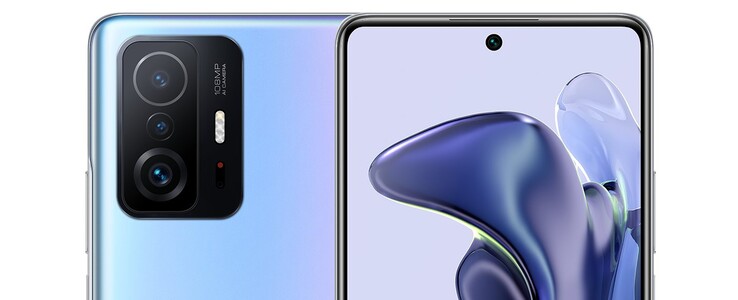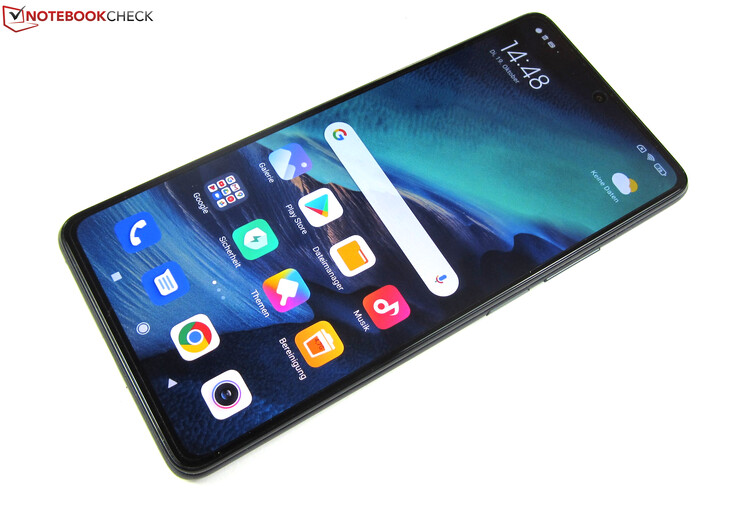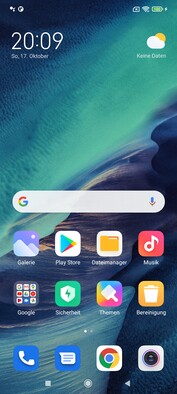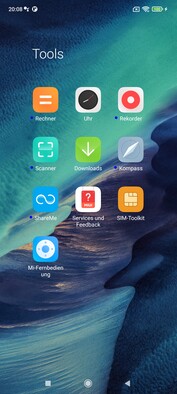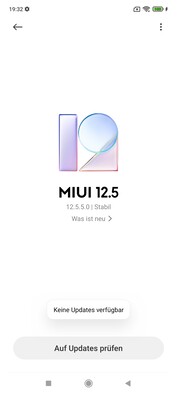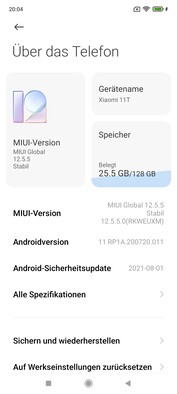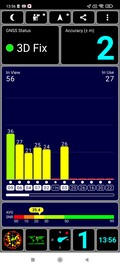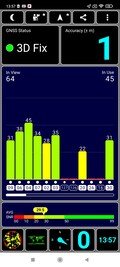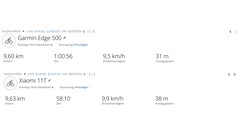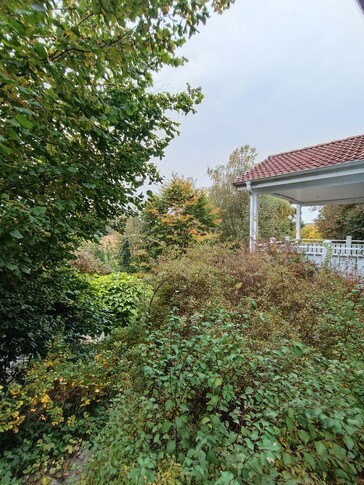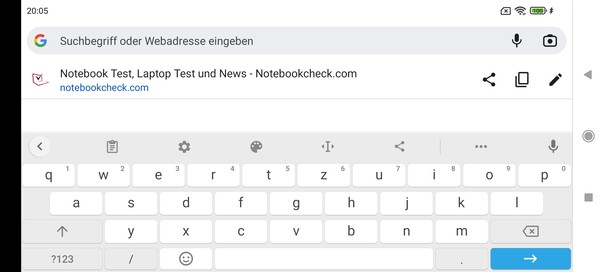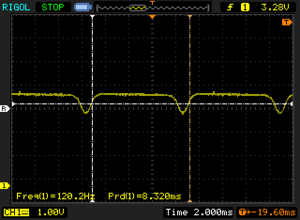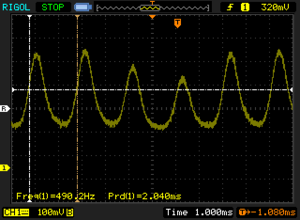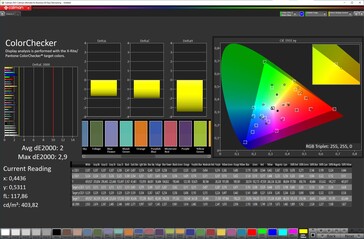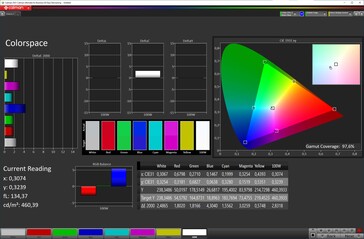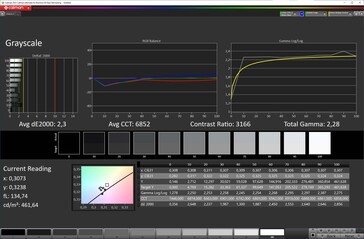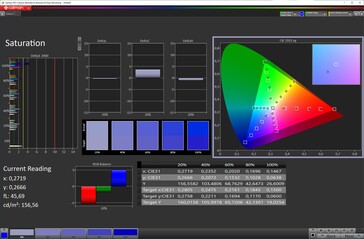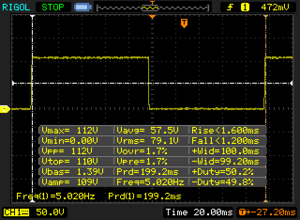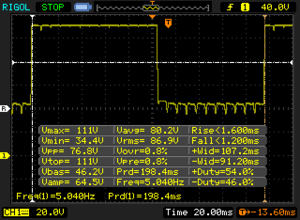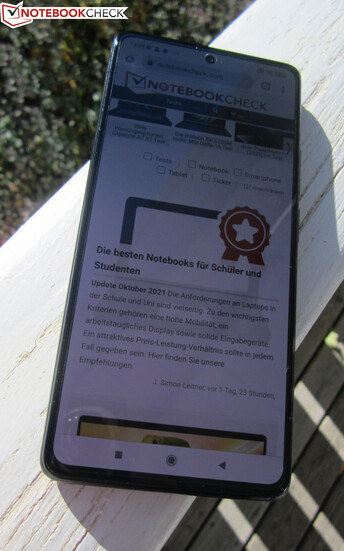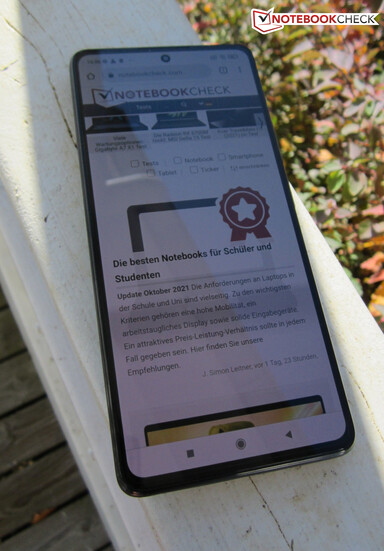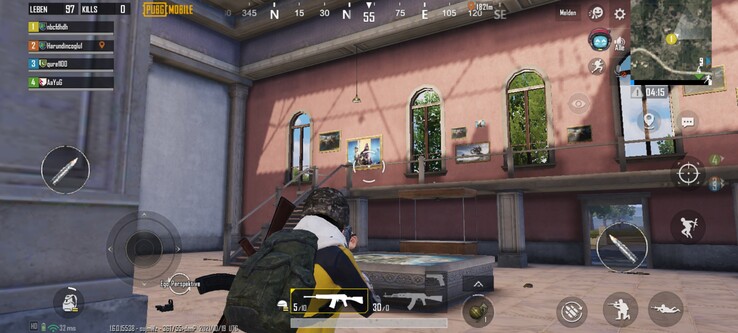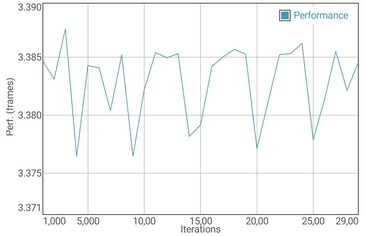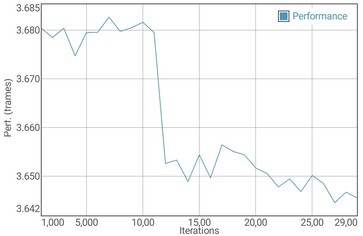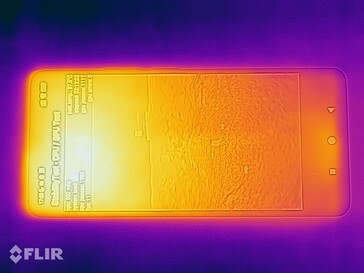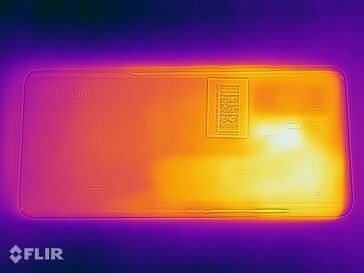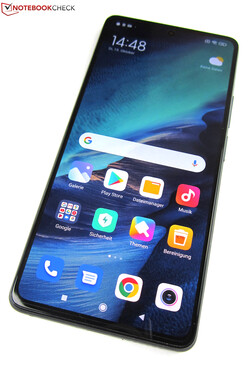Xiaomi 11T smartphone review: High-End features at a budget price
With the 11T and the 11T Pro, Xiaomi has two new smartphones in its lineup that are interesting due to their mix of high-end features and moderate price. Both offer a 6.67-inch AMOLED panel running at 120 Hz, which is said to reach a brightness of up to 800 cd/m² for SDR content and even up to 1,000 cd/m² for HDR. This is accompanied by 8 GB of LPDDR4x RAM, at least 128 GB of UFS 3.1 flash storage, and a 108 MP camera.
While the 11T Pro is powered by the Snapdragon 888, the 11T is equipped with the MediaTek Dimensity 1200, which is also a high-end SoC. Only the Pro model offers support for Dolby Vision as well as Harman Kardon stereo speakers and a 120-watt charger. The 11T can "only" be charged at 67 watts, which is still supposed to get the smartphone battery from 0% to 100% in a brisk 36 minutes.
The slightly lighter configuration of the 11T is reflected in the lower price. The Xiaomi 11T is 100 Euros (~$116) cheaper than the 11T Pro, and it costs 550 Euros (~$635) in the lower-capacity 128 GB version.
Possible contenders in comparison
Rating | Date | Model | Weight | Drive | Size | Resolution | Price |
|---|---|---|---|---|---|---|---|
| 86.6 % v7 (old) | 10 / 2021 | Xiaomi 11T Dimensity 1200, Mali-G77 MP9 | 203 g | 128 GB UFS 3.1 Flash | 6.67" | 2400x1080 | |
| 85.4 % v7 (old) | 05 / 2021 | Motorola Moto G100 SD 870, Adreno 650 | 207 g | 128 GB UFS 3.1 Flash | 6.70" | 2520x1080 | |
| 85.1 % v7 (old) | 08 / 2021 | OnePlus Nord 2 5G Dimensity 1200, Mali-G77 MP9 | 189 g | 256 GB UFS 3.1 Flash | 6.43" | 2400x1080 | |
| 87.9 % v7 (old) | 02 / 2021 | Samsung Galaxy S20 FE 5G SD 865, Adreno 650 | 190 g | 128 GB UFS 3.1 Flash | 6.50" | 2400x1080 | |
| 85.9 % v7 (old) | 05 / 2021 | Xiaomi Mi 11 Lite 5G SD 780G 5G, Adreno 642 | 159 g | 128 GB UFS 2.2 Flash | 6.55" | 2400x1080 |
Case - Glass on both sides
Like its 11T Pro counterpart, the Xiaomi 11T features a 6.67-inch case with a flat AMOLED display, a punch-hole camera, and Gorilla Glass Victus. According to Corning, the display manufacturer, this is twice as scratch-resistant as the predecessor Gorilla Glass 6, and it's supposed to allow phones to withstand drops from up to two meters without the glass shattering. Xiaomi has added a protective film on top of the Gorilla Glass Victus in the 11T.
There's also glass on the back. The glass back cover looks like brushed metal and is available in "Celestial Blue", "Meteorite Gray", and "Moonlight White". The same colors are also available for the Xiaomi 11T Pro. Both sides are connected by a metal frame, which results in a very stable and high-quality unit. The screen-to-body ratio is a solid 85%. Nevertheless, the screen bezels could have been a bit narrower for a smartphone with flagship ambitions.
The "Meteorite Gray" back cover of our review sample is an eye-catcher due to its reflections, but it's also very susceptible to fingerprints. You can avoid these by putting the 11T in the transparent protective cover that's included in the box. This also evens out the hump of the 108 MP camera, which is about 2 millimeters thick, preventing the smartphone from wobbling back and forth when placed on a table.
The "Celestial Blue" and "Moonlight White" are visually more discreet than "Meteorite Gray" model. Both of them lack the glossy metal look of the gray back cover and have a matte surface instead.
The 11T doesn't have an IP certification. But this is also missing in the Pro model.
Connectivity - No headphone jack or microSD slot
All three color variants of the Xiaomi 11T come with 8 GB of LPDDR4x RAM. In addition, there are two storage variants: The 128 GB smartphone costs 550 Euros (~$635) in the Xiaomi store at the time of testing. The larger storage variant with 256 GB will set you back 600 Euros (~$693). The internal storage can't be expanded due to the absence of a microSD slot.
The SIM slot can accommodate two nano SIM cards, with both of them supporting simultaneous 5G connections. NFC and Bluetooth 5.2 are also part of the configuration. The USB-C port operates at USB 2.0 speeds and also replaces the headphone jack. The smartphone comes with a 3.5 mm audio jack adapter.
Software - Android 14 is also meant to come to the 11T
The Xiaomi 11T runs Android 11, on top of which Xiaomi has applied its in-house user interface MIUI version 12.5. At the time of testing (mid-October, MIUI version 12.5.5), the Android security patches are at the level of August 01, 2021, and therefore still fairly up to date. The smartphone supports DRM Widevine L1, which allows it to display streaming content in HD quality.
Besides a handful of Xiaomi tools, there are only a few preinstalled third-party apps and games, including Amazon, Facebook, and TikTok, as well as download links to the games PUBG Mobile and Lord Mobile. Users who don't need these apps can uninstall them all. Our 128 GB test version of the 11T has about 102 GB of available storage out of the box.
Xiaomi presents a purchase argument with the update guarantee: Three additional Android updates are said to be guaranteed for the 11T, as well as security updates for four years. This means that buyers can expect to get Android 12, 13, and 14 for the 11T as well.
Communication and GNSS - Fast Wi-Fi, accurate GPS
The Xiaomi 11T communicates via Bluetooth 5.2, NFC, along with two SIM slots that can both establish a 5G connection at the same time. It covers all the important bands for the German-speaking region with 21 4G frequencies and 13 5G frequencies, including the LTE bands 20 and 28, and the 5G frequencies n1, n3, n28, and n78.
When it comes to WLAN, the smartphone uses Wi-Fi 6 (WLAN a/b/g/n/ac/ax); it shows a strong performance with our Netgear Nighthawk AX12 reference router, which is almost identical to that of the OnePlus Nord 2 5G and the Xiaomi Mi 11 Lite 5G. Another plus point: Data transfers are executed at an almost consistently high speed in our Wi-Fi test.
| Networking | |
| iperf3 transmit AX12 | |
| Xiaomi Mi 11 Lite 5G | |
| OnePlus Nord 2 5G | |
| Xiaomi 11T | |
| Samsung Galaxy S20 FE 5G | |
| Motorola Moto G100 | |
| iperf3 receive AX12 | |
| OnePlus Nord 2 5G | |
| Xiaomi Mi 11 Lite 5G | |
| Xiaomi 11T | |
| Samsung Galaxy S20 FE 5G | |
| Motorola Moto G100 | |
The 11T determines its current position with the help of the GPS (L1, L5), Galileo (E1, E5a), GLONASS (L1), BeiDou (B1), and QZSS (L1, L5) satellite navigation systems. Indoors, it's accurate to two meters in the test; outdoors, it's even accurate to one meter.
The 11T is also impressive in our real-world test. During a 10-kilometer bike ride, it tracked the route almost as accurately as the Garmin Edge 500 professional navigation device. As a result, using the smartphone for navigation should work without issues.
Telephone and call quality - VoLTE and VoWiFi, low SAR levels
The Xiaomi smartphone delivers good call quality in the Vodafone network, even when using the hands-free mode. We didn't experience drops or other interference during our test calls. Video calls using the 16 MP selfie camera worked without problems too. The Xiaomi 11T supports VoLTE and WLAN calls.
With SAR levels of 0.554 W/kg (head) and 0.954 W/kg (body), the smartphone has pretty low radiations.
Cameras - 108 MP, and only minor shortcomings compared with the 11T Pro
Just like the 11T Pro, the Xiaomi 11T is equipped with a 108 MP triple-camera setup (f/1.75) that combines nine pixels into one "Super Pixel" via pixel-binning, resulting in 12 MP photos (3000x4000 pixels) in the standard mode. However, the full 108 MP can also be used in the "108M" mode. The selfie camera has a resolution of 16 MP, and it provides a solid image quality in video calls, achieving a maximum of 1080p at 30 frames per second.
The 108 MP camera shoots really good photos in good light that show many details and score points with a high dynamic range. In lower lighting conditions, the color spectrum shifts a bit towards the warm side as seen in our sample photos to the right, but the image quality remains just as good. Even night shots don't pose too many problems for the Xiaomi 11T, unlike in many rival smartphones. If there's still sufficient light left, the main camera still gets a relatively large amount of details out of subjects in "Night" mode.
The ultra wide-angle lens of the camera trio has a resolution of 8 MP (f/2.2, 120°); it uses a slightly different white balance than the main camera, and it still produces quite good pictures. However, the image quality decreases visibly compared with the 108 MP camera, and photos become blurry towards the edges. If you activate the "Super Macro" mode, the telemacro camera kicks in (f/2.4), which works in a focus range of three to seven centimeters - a nice addition overall, but nothing more.
The main camera records videos at a maximum of 4K and 30 frames per second, and it's assisted by electronic image stabilization, something that works pretty well in practice. We also really like the image quality. Unfortunately, it's not possible to switch between the main and wide-angle lenses when recording as it is with the 11T Pro. You will also have to do without 4K videos at 60 FPS when using the main camera as well as 1080 videos at 60 FPS when using the selfie camera - both features are only available in the 11T Pro.
Image comparison
Choose a scene and navigate within the first image. One click changes the position on touchscreens. One click on the zoomed-in image opens the original in a new window. The first image shows the scaled photograph of the test device.
Daylight-Scene 1Daylight-Scene 2Ultra-wide angle5x zoomLow-light photographyWe take another close look at the camera under controlled lighting conditions. In the test lab and under optimal lighting conditions (upper color chart), the main camera reproduces colors quite accurately across the board. However, it reaches its limits in low ambient light (lower color chart at 1 lux), because color accuracy decreases significantly here, and only blurry outlines are visible on the otherwise sharp test chart.
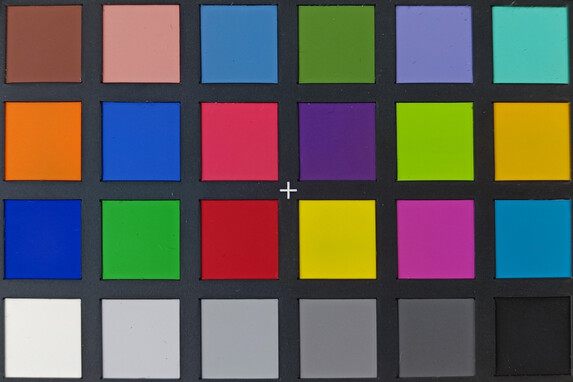

Accessories and warranty - 67-watt charger included
Xiaomi includes a 67-watt charger, a USB-C cable (Type-C to Type-A), a SIM tool, a transparent protective case, a 3.5 mm audio jack adapter, a quick-start guide, and a warranty information booklet with the 11T.
The device comes with a 12-month warranty.
Input devices and handling - 480 Hz sampling rate and 120 Hz refresh rate
Thanks to its 480 Hz sampling rate and its maximum refresh rate of 120 Hz, the Xiaomi 11T can be operated very smoothly. As with other high-end smartphones, the Xiaomi device gives the impression that displaying content quickly on its capacitive touchscreen doesn't require any effort.
The Xiaomi 11T can be unlocked biometrically with a fingerprint, which works quickly and reliably. Authentication via 2D facial recognition is possible as well, but it's less secure. In return, the unlocking process works well even in low ambient light, as long as the display is bright enough.
Display - Up to 1,000 cd/m² is possible
The AMOLED display of the Xiaomi 11T has a resolution of 2400x1080 pixels. In relation to the 6.67-inch diagonal, this results in a pixel density of 395 PPI, which ensures a sharp image. The refresh rate can be set to 60 or 120 Hz in the Android settings, with the latter providing a particularly smooth reproduction.
The 11T also adjusts the frame rate dynamically depending on the image content. In this way, 30 Hz and 90 Hz are also possible with 60 Hz and 120 Hz, respectively. The 11T also supports HDR10+. Dolby Vision is reserved for the 11T Pro, though.
Nominally, the AMOLED display achieves up to 800 cd/m², and even up to 1,000 cd/m² with HDR content. The 11T performs very well in the test lab. On average, the panel reaches a brightness of just under 782 cd/m² with a white background and a maximum brightness of 809 cd/m². With evenly distributed bright and dark image areas (APL50), the maximum brightness increases up to 975 cd/m², while a maximum of 485 cd/m² is possible with the brightness sensor turned off. We measured a minimum brightness of 2.28 cd/m².
As is typical for OLEDs, the Xiaomi smartphone also uses pulse width modulation (PWM) for brightness control, which can be bothersome for sensitive users. The "Anti-Flicker Mode" in the display settings can help against this. However, this means saying goodbye to the 120 Hz, because the refresh rate is then set to 60 Hz.
At a display brightness between 42% and 100%, the PWM frequency is 120.2 Hz, while it lies in a range between 471.7 and 500 Hz at levels between 14% and 42%. Below that (<14% brightness), it fluctuates between 162.3 and 490.2 Hz.
| |||||||||||||||||||||||||
Brightness Distribution: 94 %
Center on Battery: 781 cd/m²
Contrast: ∞:1 (Black: 0 cd/m²)
ΔE ColorChecker Calman: 2 | ∀{0.5-29.43 Ø4.77}
ΔE Greyscale Calman: 2.3 | ∀{0.09-98 Ø5}
99.8% sRGB (Calman 2D)
Gamma: 2.28
CCT: 6852 K
| Xiaomi 11T AMOLED, 2400x1080, 6.7" | Motorola Moto G100 IPS/LTPS, 2520x1080, 6.7" | OnePlus Nord 2 5G AMOLED, 2400x1080, 6.4" | Samsung Galaxy S20 FE 5G Super AMOLED, 2400x1080, 6.5" | Xiaomi Mi 11 Lite 5G AMOLED, 2400x1080, 6.6" | |
|---|---|---|---|---|---|
| Screen | -97% | -45% | -12% | -32% | |
| Brightness middle (cd/m²) | 781 | 562 -28% | 594 -24% | 714 -9% | 863 10% |
| Brightness (cd/m²) | 782 | 535 -32% | 594 -24% | 721 -8% | 860 10% |
| Brightness Distribution (%) | 94 | 90 -4% | 99 5% | 95 1% | 93 -1% |
| Black Level * (cd/m²) | 0.57 | ||||
| Colorchecker dE 2000 * | 2 | 3.99 -100% | 2.74 -37% | 1.8 10% | 3.2 -60% |
| Colorchecker dE 2000 max. * | 2.9 | 9.74 -236% | 6 -107% | 5.1 -76% | 5.2 -79% |
| Greyscale dE 2000 * | 2.3 | 6.5 -183% | 4.2 -83% | 2 13% | 3.9 -70% |
| Gamma | 2.28 96% | 2.174 101% | 2.278 97% | 2.16 102% | 2.33 94% |
| CCT | 6852 95% | 6882 94% | 7322 89% | 6588 99% | 7299 89% |
| Contrast (:1) | 986 |
* ... smaller is better
Screen Flickering / PWM (Pulse-Width Modulation)
| Screen flickering / PWM detected | 120.2 Hz | ≤ 100 % brightness setting | |
The display backlight flickers at 120.2 Hz (worst case, e.g., utilizing PWM) Flickering detected at a brightness setting of 100 % and below. There should be no flickering or PWM above this brightness setting. The frequency of 120.2 Hz is very low, so the flickering may cause eyestrain and headaches after extended use. In comparison: 53 % of all tested devices do not use PWM to dim the display. If PWM was detected, an average of 8081 (minimum: 5 - maximum: 343500) Hz was measured. | |||
The Xiaomi 11T offers several color schemes to choose from for the display. The "Vivid" mode is set by default, while the "Saturated" and "Original Color" modes are also available. Users can also switch the color space between sRGB and DCI-P3. The most accurate color reproduction is achieved with the "Saturated" color scheme and the color temperature adjusted to "Warm".
Display Response Times
| ↔ Response Time Black to White | ||
|---|---|---|
| 2.8 ms ... rise ↗ and fall ↘ combined | ↗ 1.6 ms rise | |
| ↘ 1.2 ms fall | ||
| The screen shows very fast response rates in our tests and should be very well suited for fast-paced gaming. In comparison, all tested devices range from 0.1 (minimum) to 240 (maximum) ms. » 12 % of all devices are better. This means that the measured response time is better than the average of all tested devices (20.2 ms). | ||
| ↔ Response Time 50% Grey to 80% Grey | ||
| 2.8 ms ... rise ↗ and fall ↘ combined | ↗ 1.6 ms rise | |
| ↘ 1.2 ms fall | ||
| The screen shows very fast response rates in our tests and should be very well suited for fast-paced gaming. In comparison, all tested devices range from 0.165 (minimum) to 636 (maximum) ms. » 11 % of all devices are better. This means that the measured response time is better than the average of all tested devices (31.6 ms). | ||
Thanks to its bright AMOLED display, the Xiaomi 11T can be used easily outdoors. Screen content can still be recognized well even in direct sunlight. The device also scores good marks for its viewing-angle stability. Content can be viewed perfectly even from extreme angles.
Performance - MediaTek SoC with a lot of power
The Xiaomi 11T gets its performance from the high-end MediaTek Dimensity 1200 SoC and its ARM Mali-G77 MP9 graphics chip. In terms of performance, the CPU/GPU duo ranks roughly between the Snapdragon 780G 5G found in the Xiaomi Mi 11 Lite 5G and the Snapdragon 865 found in the Samsung Galaxy S20 FE 5G.
The Snapdragon 870 in the Motorola Moto G100 and, of course, the Snapdragon 888 in the Xiaomi 11T Pro pack even more power than the MediaTek Dimensity 1200. These performance differences aren't noticeable in everyday use, though, since there's always more than enough power available.
| AnTuTu v8 - Total Score (sort by value) | |
| Xiaomi 11T | |
| Motorola Moto G100 | |
| OnePlus Nord 2 5G | |
| Samsung Galaxy S20 FE 5G | |
| Xiaomi Mi 11 Lite 5G | |
| Average MediaTek Dimensity 1200 (534286 - 540464, n=2) | |
| VRMark - Amber Room (sort by value) | |
| Xiaomi 11T | |
| Motorola Moto G100 | |
| OnePlus Nord 2 5G | |
| Xiaomi Mi 11 Lite 5G | |
| Average MediaTek Dimensity 1200 (5034 - 5397, n=2) | |
| AImark - Score v2.x (sort by value) | |
| Xiaomi 11T | |
| OnePlus Nord 2 5G | |
| Xiaomi Mi 11 Lite 5G | |
| Average MediaTek Dimensity 1200 (71083 - 71546, n=2) | |
| Jetstream 2 - 2.0 Total Score | |
| Average of class Smartphone (23.8 - 387, n=147, last 2 years) | |
| Motorola Moto G100 (Chrome 90) | |
| Xiaomi Mi 11 Lite 5G (Chrome90) | |
| Xiaomi 11T (Chrome 94.0.4606.85) | |
| Average MediaTek Dimensity 1200 (51.1 - 51.8, n=2) | |
| OnePlus Nord 2 5G (Chrome 92) | |
| Samsung Galaxy S20 FE 5G (Chrome 81.0.4044.138) | |
| JetStream 1.1 - Total Score | |
| Motorola Moto G100 (Chrome 90) | |
| Xiaomi Mi 11 Lite 5G (Chrome90) | |
| Xiaomi 11T (Chrome 94.0.4606.85) | |
| Average MediaTek Dimensity 1200 (108.8 - 117.6, n=2) | |
| OnePlus Nord 2 5G (Chrome 92) | |
| Samsung Galaxy S20 FE 5G (Chrome 81.0.4044.138) | |
| Speedometer 2.0 - Result 2.0 | |
| Average of class Smartphone (15.2 - 643, n=119, last 2 years) | |
| Motorola Moto G100 (Chome 90) | |
| Xiaomi Mi 11 Lite 5G (Chrome90) | |
| Xiaomi 11T (Chrome 94.0.4606.85) | |
| Average MediaTek Dimensity 1200 (50.2 - 54.1, n=2) | |
| OnePlus Nord 2 5G (Chome 92) | |
| Samsung Galaxy S20 FE 5G (Chrome 81.0.4044.138) | |
| WebXPRT 3 - Overall | |
| Average of class Smartphone (38 - 380, n=30, last 2 years) | |
| Motorola Moto G100 (Chrome 90) | |
| Samsung Galaxy S20 FE 5G (Chrome 81.0.4044.138) | |
| Xiaomi Mi 11 Lite 5G (Chrome90) | |
| Xiaomi 11T (Chrome 94.0.4606.85) | |
| Average MediaTek Dimensity 1200 (69 - 70, n=2) | |
| OnePlus Nord 2 5G (Chrome 92) | |
| Octane V2 - Total Score | |
| Average of class Smartphone (2228 - 126661, n=194, last 2 years) | |
| Motorola Moto G100 (Chrome 90) | |
| Xiaomi 11T (Chrome 94.0.4606.85) | |
| Average MediaTek Dimensity 1200 (26207 - 29912, n=2) | |
| Xiaomi Mi 11 Lite 5G (Chrome90) | |
| OnePlus Nord 2 5G (Chrome 92) | |
| Samsung Galaxy S20 FE 5G (Chrome 81.0.4044.138) | |
| Mozilla Kraken 1.1 - Total | |
| Samsung Galaxy S20 FE 5G (Chrome 81.0.4044.138) | |
| OnePlus Nord 2 5G (Chrome 92) | |
| Xiaomi Mi 11 Lite 5G (Chrome90) | |
| Average MediaTek Dimensity 1200 (1444 - 1809, n=2) | |
| Motorola Moto G100 (Chrome 90) | |
| Xiaomi 11T (Chrome 94.0.4606.85) | |
| Average of class Smartphone (257 - 28190, n=154, last 2 years) | |
* ... smaller is better
Like the 11T Pro, the 11T uses the same fast UFS 3.1 storage. The sequential transfer rates are very good, but the 4 KB random reads and writes could do with a little push. It's possible that the 256 GB version of the smartphone performs better than our 128 GB review sample in terms of 4K speeds.
| Xiaomi 11T | Motorola Moto G100 | OnePlus Nord 2 5G | Samsung Galaxy S20 FE 5G | Xiaomi Mi 11 Lite 5G | Average 128 GB UFS 3.1 Flash | Average of class Smartphone | |
|---|---|---|---|---|---|---|---|
| AndroBench 3-5 | 36% | 44% | 21% | 8% | 32% | 99% | |
| Sequential Read 256KB (MB/s) | 1790 | 1730 -3% | 1827 2% | 1528 -15% | 949 -47% | 1575 ? -12% | 2235 ? 25% |
| Sequential Write 256KB (MB/s) | 942 | 717 -24% | 1256 33% | 676 -28% | 710 -25% | 780 ? -17% | 1871 ? 99% |
| Random Read 4KB (MB/s) | 139.3 | 253.6 82% | 223.7 61% | 228.4 64% | 207.9 49% | 244 ? 75% | 297 ? 113% |
| Random Write 4KB (MB/s) | 133.3 | 252.9 90% | 239 79% | 218.4 64% | 206.9 55% | 244 ? 83% | 343 ? 157% |
Games - They run smoothly, but 120 FPS is the exception
The Xiaomi 11T can run modern games smoothly. However, the smartphone isn't able to take advantage of its 120 Hz display, at least not in our test games. PUBG Mobile is limited to 30 frames per second in the HD setting. The same happens with Armajet, which actually shouldn't restrict us in terms of frame rates. At least the third test game, Asphalt 9, runs at a nearly constant 60 frames per second.
We used the tool Gamebench to determine the frame rates.
Emissions - No overheating problems
Temperature
When it comes to thermals, the Xiaomi 11T remains modest. It only warmed up to a maximum of 37.1 °C (~99 °F) during our one-hour stress test, so it always felt comfortable to the touch.
The smartphone's internal heat dissipation is much better than that of the OnePlus Nord 2 5G, for example, which uses the same SoC. The stress tests with GFXBench and 3DMark Wild Life show that although throttling does occur, the performance drop is so low that almost no power is lost in the end.
(+) The maximum temperature on the upper side is 37.1 °C / 99 F, compared to the average of 35.2 °C / 95 F, ranging from 21.9 to 247 °C for the class Smartphone.
(+) The bottom heats up to a maximum of 35.6 °C / 96 F, compared to the average of 34 °C / 93 F
(+) In idle usage, the average temperature for the upper side is 30.7 °C / 87 F, compared to the device average of 32.9 °C / 91 F.
3DMark Wild Life Stress Test
| 3DMark | |
| Wild Life Stress Test Stability | |
| Xiaomi 11T | |
| OnePlus Nord 2 5G | |
| Wild Life Extreme Stress Test | |
| Xiaomi 11T | |
| OnePlus Nord 2 5G | |
Speakers
The Xiaomi 11T has speakers at the top and bottom. The dual speakers reach up to 88.6 dB(A) and support Dolby Atmos. They produce a clear sound that is also thin, since bass tones are virtually nonexistent.
Headsets and external speakers can be connected to the 11T using the USB-C to 3.5 mm audio jack adapter or wirelessly via Bluetooth 5.2.
Xiaomi 11T audio analysis
(+) | speakers can play relatively loud (88.6 dB)
Bass 100 - 315 Hz
(-) | nearly no bass - on average 24.1% lower than median
(±) | linearity of bass is average (9.6% delta to prev. frequency)
Mids 400 - 2000 Hz
(±) | reduced mids - on average 5.1% lower than median
(+) | mids are linear (4.6% delta to prev. frequency)
Highs 2 - 16 kHz
(+) | balanced highs - only 1.9% away from median
(+) | highs are linear (4% delta to prev. frequency)
Overall 100 - 16.000 Hz
(±) | linearity of overall sound is average (15.9% difference to median)
Compared to same class
» 4% of all tested devices in this class were better, 4% similar, 91% worse
» The best had a delta of 11%, average was 35%, worst was 134%
Compared to all devices tested
» 24% of all tested devices were better, 5% similar, 71% worse
» The best had a delta of 4%, average was 24%, worst was 134%
Samsung Galaxy S20 FE 5G audio analysis
(+) | speakers can play relatively loud (90.1 dB)
Bass 100 - 315 Hz
(-) | nearly no bass - on average 20% lower than median
(±) | linearity of bass is average (9.8% delta to prev. frequency)
Mids 400 - 2000 Hz
(±) | higher mids - on average 7.3% higher than median
(+) | mids are linear (4.8% delta to prev. frequency)
Highs 2 - 16 kHz
(±) | higher highs - on average 9.5% higher than median
(+) | highs are linear (5.4% delta to prev. frequency)
Overall 100 - 16.000 Hz
(±) | linearity of overall sound is average (21.9% difference to median)
Compared to same class
» 44% of all tested devices in this class were better, 8% similar, 48% worse
» The best had a delta of 11%, average was 35%, worst was 134%
Compared to all devices tested
» 62% of all tested devices were better, 7% similar, 31% worse
» The best had a delta of 4%, average was 24%, worst was 134%
Battery life - Very fast charging
Energy consumption
Xiaomi brings out the big guns when it comes to the power adapter. The 11T's USB charger, which weighs just under 100 grams, has a capacity of 67 watts and is supposed to fully charge the smartphone in less than 40 minutes. Although it took 48 minutes for the battery to reach 100% in the test, that's still very fast.
However, the Xiaomi 11T Pro scores even better with its 120-watt power adapter if every single minute of charging is important. This should allow the charging process to take only 17 minutes. However, neither the Pro model nor the 11T are capable of wireless charging.
The Xiaomi 11T consumes a comparatively low amount of power, and it's quite frugal, especially under load.
| Off / Standby | |
| Idle | |
| Load |
|
Key:
min: | |
| Xiaomi 11T 5000 mAh | Motorola Moto G100 5000 mAh | OnePlus Nord 2 5G 4500 mAh | Samsung Galaxy S20 FE 5G 4500 mAh | Xiaomi Mi 11 Lite 5G 4250 mAh | Average MediaTek Dimensity 1200 | Average of class Smartphone | |
|---|---|---|---|---|---|---|---|
| Power Consumption | -15% | -4% | 14% | -2% | -2% | -16% | |
| Idle Minimum * (Watt) | 0.78 | 0.9 -15% | 0.8 -3% | 0.75 4% | 0.83 -6% | 0.79 ? -1% | 0.847 ? -9% |
| Idle Average * (Watt) | 1.86 | 1.5 19% | 1.2 35% | 1.41 24% | 1.92 -3% | 1.53 ? 18% | 1.446 ? 22% |
| Idle Maximum * (Watt) | 1.88 | 2.1 -12% | 1.6 15% | 1.44 23% | 1.97 -5% | 1.74 ? 7% | 1.63 ? 13% |
| Load Average * (Watt) | 3.98 | 6.7 -68% | 5.7 -43% | 3.84 4% | 3.84 4% | 4.84 ? -22% | 6.95 ? -75% |
| Load Maximum * (Watt) | 8.78 | 8.5 3% | 10.9 -24% | 7.67 13% | 8.6 2% | 9.84 ? -12% | 11.3 ? -29% |
* ... smaller is better
Power consumption: Geekbench (150 cd/m²)
Power consumption: GFXBench (150 cd/m²)
Battery life
Low-power operation and a 5,000 mAh battery - together, this results in long battery runtimes for the 11T, which are, however, also common in the competition. The smartphone lasts over 13 hours when browsing the web, and even 24 hours when playing a video in a continuous loop. Therefore, the Xiaomi 11T should easily make it through a whole day of intensive use.
| Xiaomi 11T 5000 mAh | Motorola Moto G100 5000 mAh | OnePlus Nord 2 5G 4500 mAh | Samsung Galaxy S20 FE 5G 4500 mAh | Xiaomi Mi 11 Lite 5G 4250 mAh | |
|---|---|---|---|---|---|
| Battery runtime | 14% | -5% | -9% | -19% | |
| Reader / Idle (h) | 37.4 | 47.4 27% | 32.1 -14% | 33.5 -10% | 25.2 -33% |
| H.264 (h) | 24.2 | 21.4 -12% | 18.8 -22% | 20.5 -15% | 20.8 -14% |
| WiFi v1.3 (h) | 13.6 | 17.5 29% | 16 18% | 12.7 -7% | 12.2 -10% |
| Load (h) | 4.5 | 5 11% | 4.5 0% | 4.3 -4% | 3.7 -18% |
Pros
Cons
Verdict - Good overall package with minor compromises
Xiaomi's T series traditionally consists of smartphones that have many characteristics of modern high-end devices, but with slightly watered-down specs so that they're less expensive. The 11T follows the same path, also in terms of the product name, since Xiaomi has simply dropped the usual "Mi" prefix here.
In comparison to the Mi 11 flagship, the 11T lacks a curved screen, for example, and its resolution isn't quite as high. However, there are many other similarities: A good 108 MP camera, a very bright AMOLED display with a 120 Hz refresh rate, and fast charging within 40 minutes. The Xiaomi 11T Pro even manages to do this in 20 minutes thanks to its 120-watt power adapter, but it barely offers any other advantages over the 11T.
Strong performance, long battery life, and a very bright 120 Hz AMOLED display - the Xiaomi 11T offers a lot of value for money.
The decision to install the MediaTek Dimensity 1200 as the SoC is also good for the wallet. Although it's not quite as fast as the Snapdragon 888, which is found in the Mi 11 as well as in the Xiaomi 11T Pro, you won't notice this in everyday use. You will notice the low operating temperatures, because the MediaTek SoC keeps the Xiaomi 11T much cooler than its competitors with the Snapdragon 888, and it hardly needs to throttle its performance internally.
The 11T also earns praise for its very good battery runtimes and Xiaomi's promise to provide the smartphone with OS updates for three years and even four years of security patches. The smartphone only suffers from a few drawbacks, including the lack of an IP rating and the missing microSD slot
The Samsung Galaxy S20 FE and the Xiaomi Poco F3 are good alternatives to the Xiaomi 11T. Both are the same size, they feature an AMOLED display with 120 Hz, they're also very fast with the Snapdragon 865 and Snapdragon 870, respectively, and they both score points with long battery runtimes.
Price and availability
Xiaomi 11T
- 08/31/2022 v7 (old)
Manuel Masiero


